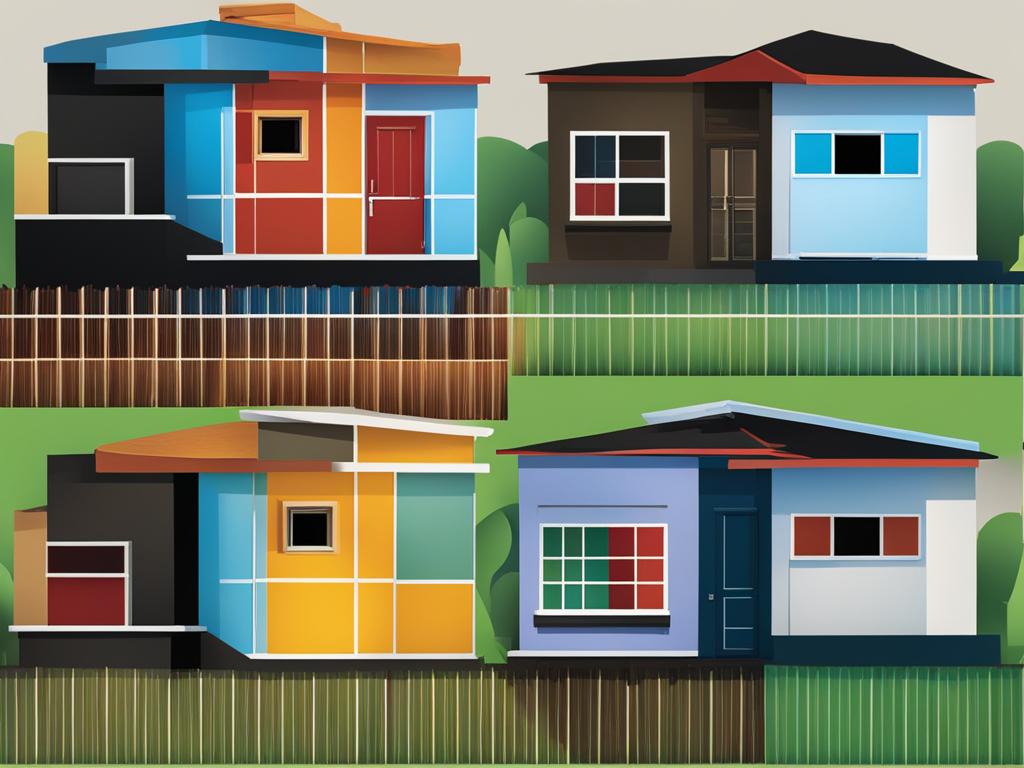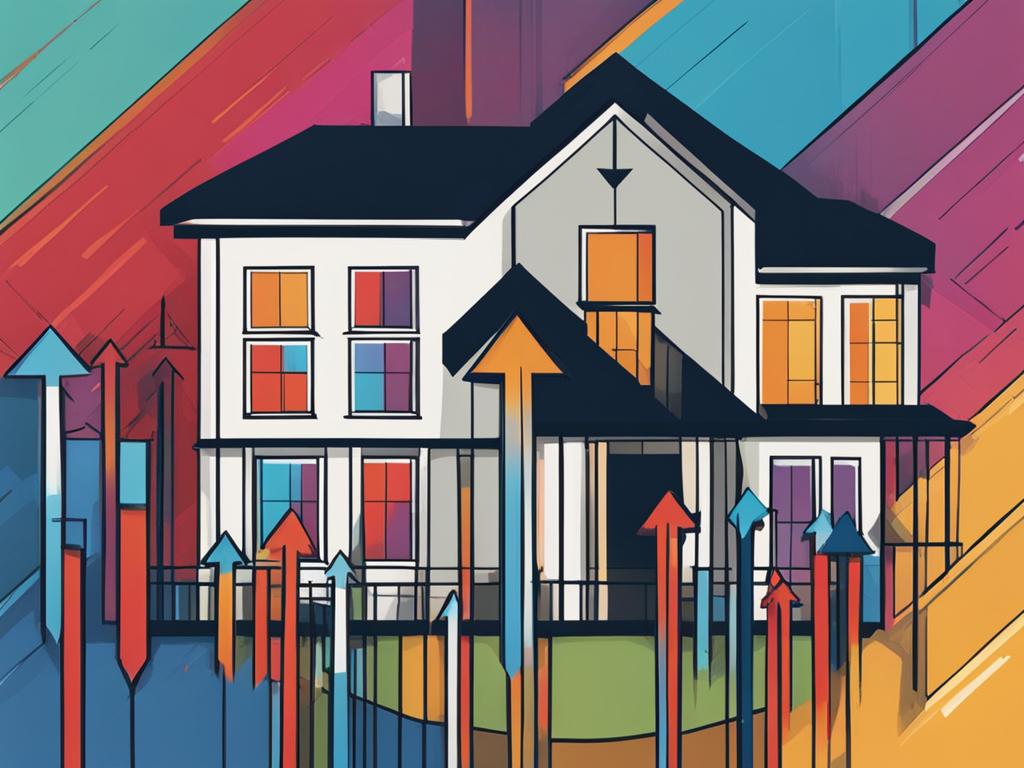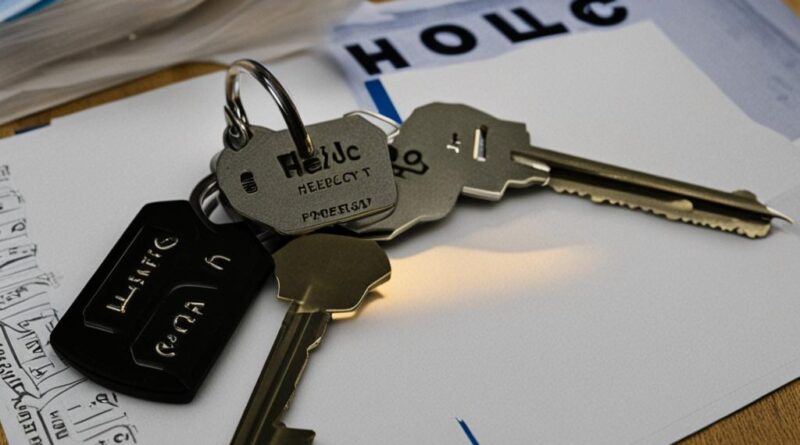Can You Have 2 HELOCs on the Same Property? Find Out Here!
Multiple home equity products can be used to achieve different financial goals, such as paying off debt, funding home renovations, or starting a business. This article explores whether it is possible to have two Home Equity Lines of Credit (HELOCs) on the same property, the types of home equity products available, and the considerations to keep in mind.
- Having multiple HELOCs on the same property is possible, but it depends on factors like your equity and lenders’ willingness to work with you.
- Consider the potential risks and disadvantages, such as increased debt load and higher interest rates, before taking on multiple HELOCs.
- Types of home equity products include home equity loans, HELOCs, and home equity investments. Each has its own features and benefits.
- Before getting multiple HELOCs, consider your financial goals, ability to manage additional debt, and impact on credit scores and financial stability.
- Lenders may have their own policies and considerations when deciding whether to extend multiple second mortgages on the same property.
Types of Home Equity Products
When considering tapping into the equity in your home, there are several types of home equity products to choose from. Each type has its own features and benefits, catering to different financial needs and circumstances. The three main types of home equity products are:
- Home Equity Loans (also known as second mortgages): With a home equity loan, you receive a lump sum of cash upfront, which can be used for various purposes, such as debt consolidation, major purchases, or home improvements. The loan is typically repaid over a fixed term with a fixed interest rate.
- Home Equity Lines of Credit (HELOCs): A HELOC provides a revolving line of credit that can be accessed as needed. This means you can borrow against your home’s equity multiple times, similar to a credit card. HELOCs often have variable interest rates and a draw period during which you can access funds. After the draw period, repayment begins, usually with a fixed interest rate and a set repayment term.
- Home Equity Investments (HEIs): HEIs, also known as shared appreciation agreements or shared equity agreements, allow homeowners to receive a lump sum of cash in exchange for a share of the appreciation in their home’s value. This type of home equity product is less common but may be suitable for homeowners looking to access funds without taking on additional debt.
Before deciding which type of home equity product is right for you, it’s important to consider your financial goals, risk tolerance, and the specifics of each product. Consulting with a financial advisor can help you navigate the various options and make an informed decision.
Comparing Home Equity Loans and HELOCs
| Home Equity Loans | HELOCs | |
|---|---|---|
| Access to Funds | Receive a lump sum of cash upfront. | Access funds as needed, similar to a credit card. |
| Interest Rate | Fixed interest rate throughout the loan term. | Variable interest rate, often tied to an index. |
| Repayment | Fixed monthly payments over a set term. | Draw period followed by repayment period. |
| Flexibility | May be more suitable for specific, one-time expenses. | Provides ongoing access to funds for various purposes. |
| Interest Deductibility | Interest may be tax-deductible under certain conditions. | Interest may be tax-deductible under certain conditions. |
“Home equity loans and HELOCs both offer homeowners the opportunity to tap into their home’s equity, but they have different structures and repayment terms. A home equity loan provides a lump sum of cash upfront, while a HELOC allows for ongoing access to funds. Choosing between the two depends on your specific financial goals and needs.” – Financial Advisor
How Many HELOCs Can You Have on Your Property?
Many homeowners wonder whether it is possible to have multiple Home Equity Lines of Credit (HELOCs) on the same property. The good news is that there is no legal limit on the number of HELOCs or other home equity products that you can have on your property. However, the number of HELOCs you can have will depend on several factors, including how much equity you own and the lenders willing to work with you.
Having multiple HELOCs can provide greater flexibility and access to additional funds for various purposes. It allows homeowners to tap into the equity in their homes and use it for different financial goals simultaneously. For example, one HELOC can be used to finance home renovations, while another can be used to start a business.
However, it’s important to carefully consider the potential risks and disadvantages of taking on multiple HELOCs. One of the main risks is the potential increase in debt load. Each HELOC comes with its own set of terms and interest rates, which can add up quickly if not managed properly. Additionally, having multiple HELOCs can also result in higher interest rates overall.
Before deciding to take on multiple HELOCs, it’s crucial to assess your financial situation and ability to manage additional debt. Consider your long-term goals and the potential impact on your credit score and overall financial stability. It’s also important to carefully review the terms and conditions of each HELOC and choose the ones that best align with your needs.
| Pros of having multiple HELOCs | Cons of having multiple HELOCs |
|---|---|
|
|
Pros and Cons of Having Multiple HELOCs
Having multiple Home Equity Lines of Credit (HELOCs) can offer certain advantages, but it also comes with potential risks and cautions. It’s important to weigh the pros and cons before considering this option.
Pros of Having Multiple HELOCs
- Flexibility: Multiple HELOCs provide you with more financial flexibility, allowing you to access funds for different purposes whenever needed.
- Tax-deductible interest: The interest paid on HELOCs may be tax-deductible, which can provide some tax benefits.
- Tackling different financial needs: With multiple HELOCs, you can simultaneously address various financial goals such as home renovations, debt consolidation, or funding a business.
Cons of Having Multiple HELOCs
- Risk of excessive debt: Taking on multiple HELOCs increases your overall debt load, which can become challenging to manage if you face financial difficulties in the future.
- Potential for foreclosure: If you are unable to make payments on your HELOCs, there is a risk of foreclosure, which can result in the loss of your home.
- Impact on credit scores and financial stability: Having multiple HELOCs can impact your credit scores and overall financial stability, especially if you have difficulty making timely payments.
Understanding the pros and cons of having multiple HELOCs is crucial in making an informed decision. It’s important to carefully assess your financial situation and consider the potential risks and cautions before proceeding with multiple HELOCs.

| Pros of Having Multiple HELOCs | Cons of Having Multiple HELOCs |
|---|---|
| Flexibility | Risk of excessive debt |
| Tax-deductible interest | Potential for foreclosure |
| Tackling different financial needs | Impact on credit scores and financial stability |
Factors to Consider Before Getting Multiple HELOCs
Before deciding to get multiple HELOCs on the same property, there are several factors you should consider. These factors will help you determine if multiple HELOCs align with your financial goals and needs while also ensuring that you can manage the additional debt.
Financial Goals and Needs
First and foremost, assess your financial goals and needs. Consider why you want multiple HELOCs and how they will help you achieve your objectives. Are you looking to fund home renovations, consolidate debt, or finance a business venture? Understanding your financial goals will give you clarity on whether multiple HELOCs are the right solution for you.
Ability to Manage Additional Debt
Another crucial consideration is your ability to manage the additional debt that comes with multiple HELOCs. Each HELOC will have its own repayment terms and monthly payments, so it’s essential to ensure that you can comfortably handle the financial obligations. Review your budget, income, and expenses to determine if you have the capacity to take on multiple lines of credit.
Impact on Credit Score and Financial Stability
Multiple HELOCs can have an impact on your credit score and overall financial stability. Opening multiple lines of credit may temporarily lower your credit score, especially if they result in higher debt utilization. Additionally, consider the potential consequences of defaulting on any of the HELOCs. Foreclosure and further damage to your credit can occur if you are unable to meet the financial obligations of multiple HELOCs.
| Things to Consider Before Getting Multiple HELOCs |
|---|
|
Ultimately, deciding whether to get multiple HELOCs on the same property is a personal and complex decision. It’s essential to carefully evaluate your goals, ability to manage debt, and the potential impact on your credit score and financial stability. Consulting with a financial advisor or lender can provide valuable guidance to help you make an informed decision.
Types of Second Mortgages
Second mortgages, such as home equity loans and home equity lines of credit (HELOCs), are popular options for homeowners looking to access the equity in their homes. These types of loans allow borrowers to tap into the value they have built up in their properties, providing them with a source of funds for various purposes. Let’s explore the different types of second mortgages available:
Home Equity Loans
A home equity loan, also known as a second mortgage, is a loan that is secured by the equity in your home. This type of loan provides a lump sum of cash, which can be used for a specific purpose. Home equity loans typically have fixed interest rates and fixed repayment terms, making them a predictable and stable financing option.
Home Equity Lines of Credit (HELOCs)
A home equity line of credit, or HELOC, is a revolving line of credit that allows homeowners to borrow against the equity in their homes. Unlike a home equity loan, where you receive a lump sum, a HELOC works more like a credit card. You can borrow funds as needed, up to a certain limit, and only pay interest on the amount you borrow. This flexibility can be beneficial for homeowners who have ongoing or unpredictable expenses.
Comparison Table: Home Equity Loans vs. HELOCs
| Feature | Home Equity Loans | HELOCs |
|---|---|---|
| Interest Rate | Fixed | Variable |
| Repayment Terms | Fixed | Flexible |
| Access to Funds | Lump sum | As needed |
| Interest Payments | On the entire loan amount | Only on amount borrowed |
| Usage | Used for specific expenses | Flexible and ongoing expenses |
Both home equity loans and HELOCs have their own advantages and considerations. It’s important to carefully assess your financial goals and needs to determine which option is best for you. Additionally, it’s crucial to consider the interest rates, repayment terms, and eligibility requirements set by lenders when choosing between the two.

Remember, before taking out a second mortgage, it’s important to thoroughly understand the terms and conditions of the loan and consider the potential impact on your financial situation. Consulting with a trusted financial advisor can also provide valuable insights and guidance tailored to your specific needs.
How Second Mortgages Work
When considering a second mortgage, it’s important to understand how these loans work and what to expect. Second mortgages allow homeowners to borrow against the equity they have built up in their homes. This means that you can access funds by using your home as collateral.
The process of getting a second mortgage involves a few key steps. First, you’ll need to apply with a lender who offers second mortgage products. They will evaluate your creditworthiness and assess the amount of equity you have in your home. If you meet their criteria, the lender will determine how much you can borrow and the terms of the loan, including the interest rate and repayment period.
Once approved, you can access the funds from your second mortgage based on the terms agreed upon. For example, with a home equity loan, you’ll receive a lump sum upfront, which you can use as needed. With a home equity line of credit (HELOC), you’ll have a revolving line of credit that you can tap into as necessary. It’s important to note that interest will accrue on the borrowed amount and you’ll need to make regular payments to repay the loan according to the agreed-upon terms.
| Key Points | Details |
|---|---|
| Borrowing Against Home Equity | A second mortgage allows homeowners to borrow against the equity they have built up in their homes. |
| Accessing Funds | Homeowners can access the funds from their second mortgage either as a lump sum or through a revolving line of credit. |
| Repayment Terms | Second mortgages come with predetermined repayment terms, including interest rates and payment schedules. |
Understanding how second mortgages work is crucial when considering whether to pursue this financing option. It’s important to carefully evaluate your financial situation and consider the potential risks and benefits before taking on additional debt secured by your home’s equity.
Requirements for Applying for a Second Mortgage
When considering a second mortgage, there are certain requirements that homeowners need to meet. These requirements typically include having a minimum amount of equity in their homes and meeting certain credit score criteria. Here are the key factors lenders often evaluate:
- Minimum equity: Lenders typically require homeowners to have a certain percentage of equity in their homes before approving a second mortgage. This ensures that there is enough collateral in case of default.
- Credit score: A good credit score is crucial when applying for a second mortgage. Lenders want to see a history of responsible borrowing and timely payments.
- Income and employment: Lenders also consider the borrower’s income and employment stability to ensure they have the financial means to make repayments.
- Debt-to-income ratio: Lenders analyze the borrower’s debt-to-income ratio to assess their ability to handle additional debt. It’s important to have a reasonable debt-to-income ratio to improve the chances of approval.
It’s worth noting that the specific requirements may vary based on the lender and the type of second mortgage being pursued. Some lenders may have more stringent criteria, while others may be more flexible. It’s advisable to shop around and compare different lenders to find the best fit for your circumstances.
| Requirements | Minimum Criteria |
|---|---|
| Equity in the home | Usually around 20% of the home’s value |
| Credit Score | Generally above 620, but higher scores may result in better rates and terms |
| Income and Employment | Stable income and employment history |
| Debt-to-Income Ratio | Generally below 43%, but lower ratios are preferable |
Meeting these requirements is essential for a successful second mortgage application. However, keep in mind that approval is not guaranteed, as lenders consider various factors beyond these minimum criteria. It’s important to have a thorough understanding of your financial situation and work with a reputable lender to increase your chances of securing a second mortgage.
Pros and Cons of Second Mortgages
Second mortgages offer homeowners access to the equity in their homes at relatively low interest rates. This can be a significant advantage for those in need of additional funds for various purposes, such as debt consolidation or financing home improvements. However, it’s important to consider the pros and cons before deciding whether a second mortgage is right for you.
Access to Equity: One of the major benefits of a second mortgage is the ability to tap into the equity you’ve built up in your home. This can provide you with a substantial amount of cash that you can use for any purpose you choose.
Low Interest Rates: Compared to other types of loans, second mortgages often come with lower interest rates. This can save you money over the long term and make your monthly payments more affordable.
Additional Monthly Payment: One of the potential drawbacks of a second mortgage is the additional monthly payment. Taking on more debt means you’ll have more financial obligations to meet each month, so it’s important to ensure you can comfortably handle the increased payment.
“A second mortgage can be a valuable tool for homeowners who need access to cash. However, it’s important to carefully consider the pros and cons and determine if the benefits outweigh the potential drawbacks.”
| Pros | Cons |
|---|---|
| Access to equity | Additional monthly payment |
| Low interest rates |

Using a Second Mortgage for Home Improvements
When it comes to financing home improvements, using a second mortgage can be a viable option. Whether you choose a home equity loan or a home equity line of credit (HELOC), utilizing the equity in your property can provide the funds needed to enhance your living space and increase the value of your home.
One of the key advantages of using a second mortgage for home improvements is the potential to increase the value of your property. Renovations such as kitchen upgrades, bathroom remodels, or adding an extra room can significantly enhance the functionality and appeal of your home. Consequently, this can lead to a higher appraisal value, allowing you to potentially recoup the money invested in the improvements when you decide to sell.
Additionally, the interest paid on a second mortgage used for home improvements may be tax-deductible. Consult with a tax professional to understand the specific eligibility criteria and any limitations that may apply in your situation. Taking advantage of this tax benefit can help offset some of the costs associated with the second mortgage, making it a more financially favorable option.
| Pros and Cons of Using a Second Mortgage for Home Improvements | |
|---|---|
| Pros | Cons |
|
|
Using a second mortgage for home improvements can be a strategic move to enhance your living space and potentially increase the value of your property. However, it’s crucial to carefully consider the costs, repayment terms, and the impact on your overall financial situation. Plan out your renovation project, assess your budget, and weigh the pros and cons before making a decision.
Can You Get Multiple Second Mortgages on the Same Property?
When it comes to accessing multiple sources of funds using second mortgages, homeowners often wonder if they can have more than one second mortgage on the same property. While there is no law or rule forbidding multiple second mortgages, the decision ultimately rests with the lender. Lenders may have their own policies and considerations when determining whether to extend multiple second mortgages to a borrower.
When applying for multiple second mortgages, it’s important to keep in mind that lenders will assess factors such as your creditworthiness, debt-to-income ratio, and the amount of equity you have in your property. They will evaluate the risk associated with extending multiple loans and will want to ensure that you have the financial capacity to manage the additional debt.
Additionally, lenders may also consider the loan-to-value ratio, which is the percentage of your property’s value that you are borrowing against. They may have limitations or restrictions based on this ratio, as they want to protect their investment in case of default or foreclosure.
It’s crucial to have open and honest discussions with potential lenders to understand their policies and requirements regarding multiple second mortgages. Each lender may have different criteria, so it’s essential to shop around and compare offers before deciding which lender and mortgage options are right for you.

| Considerations when applying for multiple second mortgages |
|---|
| ● Creditworthiness |
| ● Debt-to-income ratio |
| ● Amount of equity in the property |
| ● Loan-to-value ratio |
| ● Lender policies and requirements |
“While there is no legal restriction on obtaining multiple second mortgages on the same property, it is essential to carefully consider the lender’s policies and requirements. Open communication and understanding the lender’s evaluation criteria can help you make an informed decision and ensure that you can manage the additional debt responsibly.”
Conclusion
In conclusion, having multiple HELOCs or other types of second mortgages on the same property is possible. However, it is crucial to carefully consider the potential risks and advantages before pursuing multiple second mortgages. Homeowners should evaluate their financial goals, ability to manage additional debt, and the impact on their credit score and overall financial stability.
While multiple HELOCs can offer access to more funds and the ability to pursue various financial goals simultaneously, it’s important to weigh the potential risks. These include the risk of excessive debt, the potential for foreclosure if payments are not made, and the impact on credit scores and financial stability.
Ultimately, the decision to have multiple second mortgages on the same property rests with the lender. Lenders may have their own policies and considerations when determining whether to extend multiple second mortgages to a borrower. Therefore, it is essential to explore and understand the lender’s requirements and guidelines before proceeding.
FAQ
Can you have 2 HELOCs on the same property?
Yes, it is possible to have multiple Home Equity Lines of Credit (HELOCs) on the same property. The number of HELOCs you can have depends on the equity you own and the lenders willing to work with you.
What types of home equity products are available?
There are several types of home equity products available, including home equity loans (also known as second mortgages), home equity lines of credit (HELOCs), and home equity investments (HEIs). Each type of product has its own features and benefits.
How many HELOCs can you have on your property?
There is no legal limit on the number of HELOCs or other home equity products you can have on your property. The number of HELOCs you can have depends on your equity and the lenders willing to work with you.
What are the pros and cons of having multiple HELOCs?
Pros of having multiple HELOCs include flexibility, tax-deductible interest, and the ability to tackle different financial needs. Cons include the risk of excessive debt, potential foreclosure if payments are not made, and the impact on credit scores and financial stability.
What factors should I consider before getting multiple HELOCs?
Factors to consider include your financial goals and needs, your ability to manage additional debt, and the impact on your credit score and financial stability. It’s important to evaluate the risks and cautions associated with multiple HELOCs.
What are the types of second mortgages?
Types of second mortgages include home equity loans and home equity lines of credit (HELOCs).
How do second mortgages work?
Second mortgages allow homeowners to borrow against the equity they have built up in their homes. Home equity loans provide a lump sum of cash upfront, while HELOCs provide a revolving line of credit that can be accessed as needed.
What are the requirements for applying for a second mortgage?
Requirements vary depending on the lender and the type of second mortgage. Typically, homeowners need to have a minimum amount of equity in their homes and meet certain credit score requirements.
What are the pros and cons of second mortgages?
Pros of second mortgages include access to home equity at relatively low interest rates. Cons include the risk of foreclosure and the responsibility of an additional monthly payment.
Can you get multiple second mortgages on the same property?
There is no law or rule forbidding multiple second mortgages on the same property. However, the decision ultimately rests with the lender, who may have their own policies and considerations.

